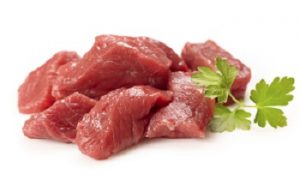
When it comes to Vietnamese pho, meat is the main attraction.
With cooler weather just around the corner, the time for sweaters and comfort food is here. Vietnamese pho is a beef noodle soup that is hearty and rich, with tasty broth that is sure to warm you up. So what do you need to know about making some?
Where Did Pho Come From?
Today’s Vietnamese cuisine owes its existence to the time of French control over Southeast Asia. Ingredients from all of the region were combined with French cooking methods to create a unique hybrid cuisine Where does the word itself, pho, originate from? It’s theorized that it is derived from the French word for fire, feu. The main reason for this theory is that Vietnamese pho bears a striking resemblance to its French cousin, known as pot-au-feu. Both pho and pot-au-feu are created by cooking simmering beef with some aromatic spices in a pot of water. The beef used for making the broth and some veggies are all served together. So what meat should go into your next bowl of pho?
Different Cuts of Meat
It’s possible to use chicken or pork in your pho, but beef is still the main attraction. The cuts of meat you use are going to depend on what you can afford, and the taste profile you’re looking for:
- Shin: Shin meat comes from below the cow’s knee. This meat is full of marrow and features collagen, which will dissolve into gelatin once it is cooked. This gelatin, although it sounds odd, is essential for giving the broth its full-bodied flavor that is sure to set your mouth watering.
- Oxtail: Oxtail meat is quite similar to shin’s, but it has more fat and tissue than the shin does. Although it can be slightly more expensive, oxtail is a worthy substitute. If you’re feeling creative, why not try both types?
- Leg Bone: Using the leg bone as the base for the broth also comes from French cooking methods. The world’s first pho restaurant opened in Hanoi in 1920, with pho itself only having been developed a few years before. Leg bones are best used for bigger batches of broth.
- Chuck: Chuck is much easier to get than shin, oxtail, or leg bone. However, if you use chuck for the broth, you might end up with more meat in your soup than you wanted.
- Brisket: Brisket gives you plenty of flavors, and makes for a tasty treat too.
- Flank: Flank isn’t the best choice for the broth, since it can get dry and stringy. But once the pho is ready, you can cut thin slices of raw flank into and let it cook that way.
Get All Your Asian Groceries at Lotte Plaza Market
Lotte Plaza Market is your one-stop shop for all of your Korean and Asian grocery needs. With more than 10 locations in Maryland and Virginia, this growing market is always expanding and opening new markets to serve our customers better. Since opening in 1976, our goal has always been to provide the best customer service and groceries to our customers. For answers to all of your questions, email us at LottePlaza.com.
